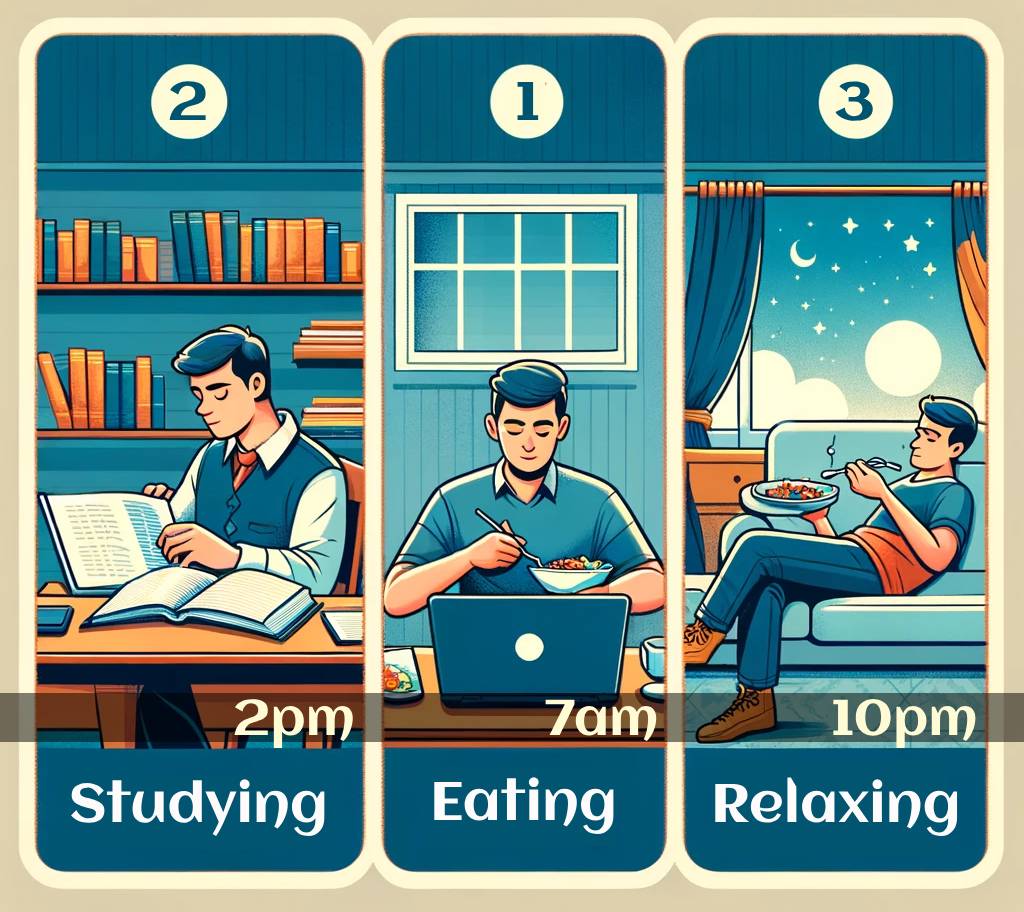Understanding the Past Perfect Tense: Form and Function
Introduction to the Past Perfect Tense
The past perfect tense is a verb tense used to describe actions that were completed before another action or point in time in the past. It helps us to clearly establish a sequence of events, giving us a way to express which of two past actions happened first. This tense is essential for creating clear and detailed narratives about past events.

Present Tense Explanation:
“It is 8 PM, and the person studies at his desk. At 9 PM, they eat dinner. Finally, at 11 PM, they go to sleep.”
Past Tense Explanation:
“At 8 PM, the person studied at his desk. By 9 PM, they were eating dinner. At 11 PM, they went to sleep.”
Past Perfect Explanation:
“By 9 PM, the person had finished studying and began eating dinner. By 11 PM, they had eaten dinner and went to sleep.”
Forming the Past Perfect Tense
The past perfect tense is formed using two main components:
- The auxiliary verb “had” (the past tense of “have”)
- The past participle of the main verb
The structure is as follows:
Subject + had + past participle of the verb
Examples:
- I had finished my project.
- She had left before you arrived.
Functions of the Past Perfect Tense
The past perfect tense serves several important functions in English. Here are the most common uses:
- To indicate the order of two past events: It shows which event happened first.
- Example: “By the time he arrived, the meeting had started.”
- To express conditions in the past: Often used in the if-clause of conditional sentences to talk about hypothetical situations.
- Example: “If I had known you were coming, I would have baked a cake.”
- To describe unrealized hopes or wishes: When talking about things in the past that did not happen.
- Example: “I had hoped to visit you last summer.”
- To give background information in stories: When telling a story, it can set the scene by providing details that happened earlier.
- Example: “She had never seen such a beautiful sunset before that day.”
Key Points to Remember
- The past perfect is not used to describe actions that happened at a specific time in the past; instead, it’s used to talk about experiences or changes that occurred before another moment or event in the past.
- The past participle of regular verbs is formed by adding -ed to the base verb (e.g., “talked,” “listened”). For irregular verbs, the past participle forms vary (e.g., “gone,” “seen,” “taken”).

